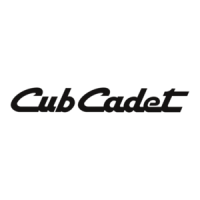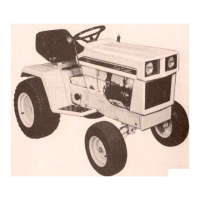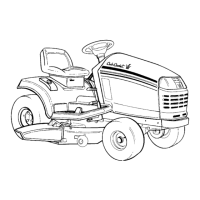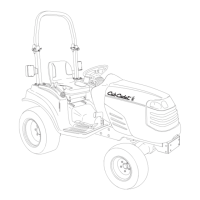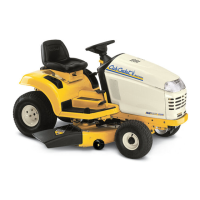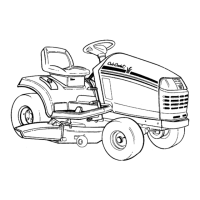HYDRO. DRIVE AND BRAKE SYSTEM
33
7. Check the fluid:
• Unless the fluid gets contaminated, it should last
for many years with no fluid service.
• Check the level and condition of the fluid:
It should be no more than 1-1/4” (3.175 cm)
down from the top of the casting. The fluid level
is generally near the bottom of the threads in the
plug hole.
• Check at the socket-head plug on the casting,
NOT the plastic expansion tank. Remove the
plug using a 1/4” allen wrench. See Figure 5.11.
• The transaxle should contain 20W-50 motor oil
having a minimum API classification of SL.
• If there is any reason to suspect that the fluid is
contaminated, replace the fluid and monitor per-
formance. A second fluid change after a brief
period of operation may be necessary to remove
all contaminants.
• If the fluid is low, there is probably a leak that
needs to be found and repaired.
• If the fluid is too full, it will drain into the catch
tank
Figure 5.11
Fill port
Expansion
tank
8. Transaxle mounting:
8a. The primary symptoms of a transaxle that is
loose in the frame are that it will lose drive
or throw-off the drive belt in reverse.
8b. Check the torque bracket and the axle
mounting points at the frame.
See Figure 5.12.
9. Eliminate heat factors
• As hydrostatic transaxles wear, they will begin to
lose drive power when they get hot.
• Heat is the enemy of transaxle performance and
longevity.
• If the cooling fan is damaged, replace it.
• Clean any mud and debris from the transaxle so
that it can shed heat properly.
• DO NOT clean the transaxle (or any part of the
tractor) with a pressure washer.
• Do not direct hose water at line pressure at the
transaxle or any bearings on the tractor.
NOTE: It is possible to inject water past seals,
contaminating fluid and ruining bearings.
Figure 5.12
Torque bracket mounting points
Torque
bracket
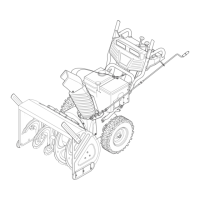
